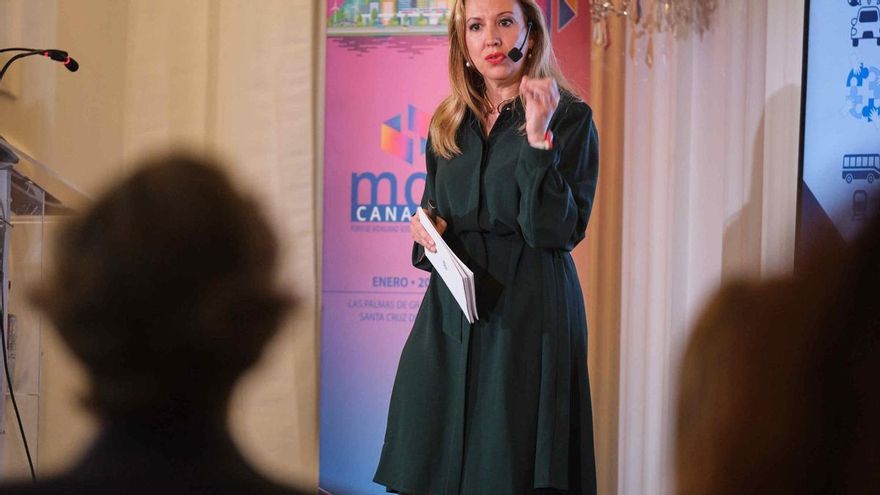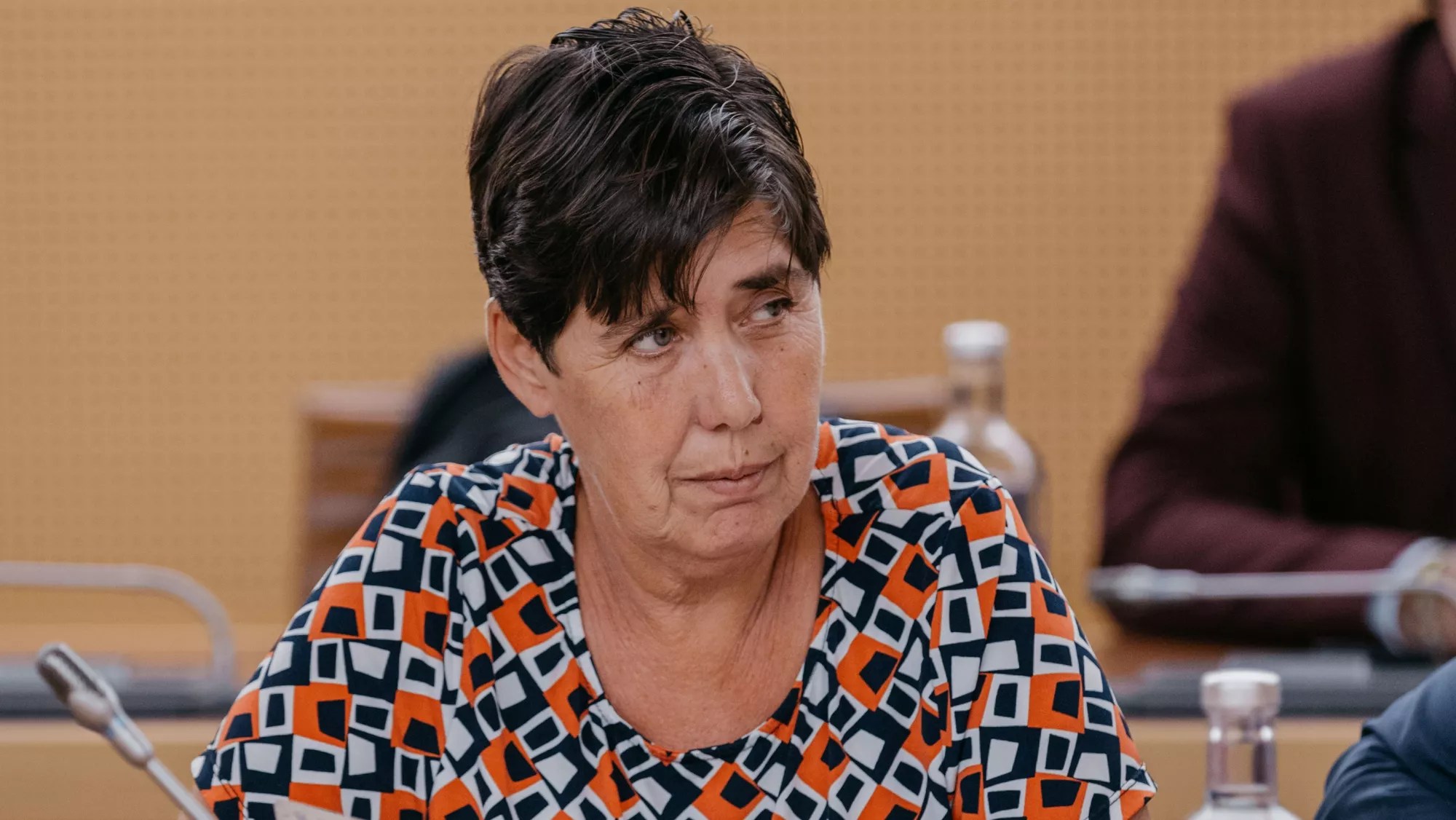
“Unity of action” versus traffic jams. Public institutions that join hands to fight against a pressing issue. The president of the Cabildo of Tenerife, Rosa Dávila (CC), put that formula on the table this Tuesday, and highlighted that Tenerife residents point out mobility as their “biggest problem.” «We are probably facing the greatest challenge that Tenerife in the coming years: have sustainable mobility,” he said.
Dávila expressed himself in these terms during the MOV Forum Canary Islands-Sustainable Mobility and Connectivity, organized by the Government of the Canary Islands and Prensa Ibérica, a communication group to which he belongs THE DAY-THE OPINION OF TENERIFE. This proposal for analysis and debate celebrated its closing this Tuesday at the Santa Cruz Hotel Mencey. In addition to the island president, the Minister of Public Works, Mobility and Housing of the Government of the Canary Islands participated, Pablo Rodríguezand the head of Mobility of the Tenerife Cabildo, Eulalia García.
He director of this newspaper, Joaquín Catalán, presented an event in which Dávila made the main intervention. From the beginning, the nationalist politician focused on the importance of reaching inter-administrative agreements. “This is not a challenge that we can address from a single institution,” he stated.
Rosa Dávila now offered a panoramic view of the Tenerife Sustainable Mobility Plan, which is currently in the public exhibition phase and which contains data that, as he highlighted, “allows us to shed light on some solutions.” According to him, it seeks “more sustainable mobility that is committed to the environment”, and specified that an identification has been made “of everything that has to do with mobility”, such as the road system or rail transport.
This study results in relevant data, such as: 83% of mobility in Tenerife is residents and that 15% do it for professional reasons. Of the total, 80% of trips are made by private vehicle; andl 14%, walking or cycling, and alone 6%, by public transport. The thing is not there. According to the data presented, the occupancy of the vehicles is 1.3 people per vehicle, which is why it was considered that it “is used in a quite inefficient way.”
More figures: up to 1.3 million trips take place in the Metropolitan Area, while other important areas in this matter are the Southeast and the La Orotava Valley. It also stands out that a “very important” part of these journeys are internal to those areas, to the point that 80% of mobility in Tenerife takes place in eight municipalities. For its part, 55% are “intra-municipal movements, but they often hit large arteries,” such as highways.
Rosa Dávila also stopped in the distance of travel. «Another piece of information that seems important to me to be able to make decisions is that “50% of the distances traveled in private vehicles are made in less than seven kilometers,” highlighted the information contained in a comprehensive document, which exceeds 1,000 pages.
The closure of the Insular Ring or the work of Las Chafiras-Oroteanda were two of the actions that he emphasized. “We have been working hand in hand with the Government of the Canary Islands for six months,” he said, and added the importance of solving problems with the links and organizing the network by prioritizing public transport through the bus-HOV lanes.
The head of the Tenerife Council He recalled the acquisition of 247 new buses and the process of hiring new drivers to have sufficient staff in the current scenario of free public transportation, which has increased the number of travelers.
“Mobility policies are at the same level of importance as road construction,” Dávila pointed out, before referring to the need for the involvement of local authorities and, in particular, to find a solution to internal displacements. This is only one of the vertices of the problem, while work is already being done on others, such as promoting the use of shared vehicles, the regulation of schedules in some sectors or administrative decentralization. And at that point he introduced that they are working to have two multiple buildings of the Cabildo of Tenerife in the North and the South, with which a triple result would be achieved: bringing services closer to citizens, allowing workers to avoid these trips and Above all, reduce traffic.
The reference made by the Tenerife president to the creation of a “single transport authority” on the island of Tenerife, where the local authorities are also located. It is an initiative that was already proposed a decade ago. In Dávila’s opinion, this figure would allow “collegiate, shared, decisive decisions to be made, which, on many occasions, will not be easy.”
This Tuesday the nationalist defended that The Cabildo of Tenerife “is called to lead this process to change the paradigm of mobility in Tenerife” and to solve a “historical problem.” “It is going to be very important to analyze all this data to provide the best solutions for mobility,” he continued about the significance of the Tenerife Sustainable Mobility Plan. He also saw it as essential that the entire Tenerife society joins the solutions proposed because their “quality of life” will depend on it.
“By doing more of the same we were not going to get anywhere,” said Rosa Dávila at the end of her speech, and mentioned the decision to extend the tram to the Snowman and to “move forward” with the extension of this means to Los Rodeos. This is an issue that in recent years has generated controversy in La Laguna. “There are many actions that we can carry out and not just focus on the construction of roads,” he said. “If we want to have a sustainable island, we have to convince citizens that a very important part of their mobility has to be transferred from private vehicles to public transportation,” he maintained.
















